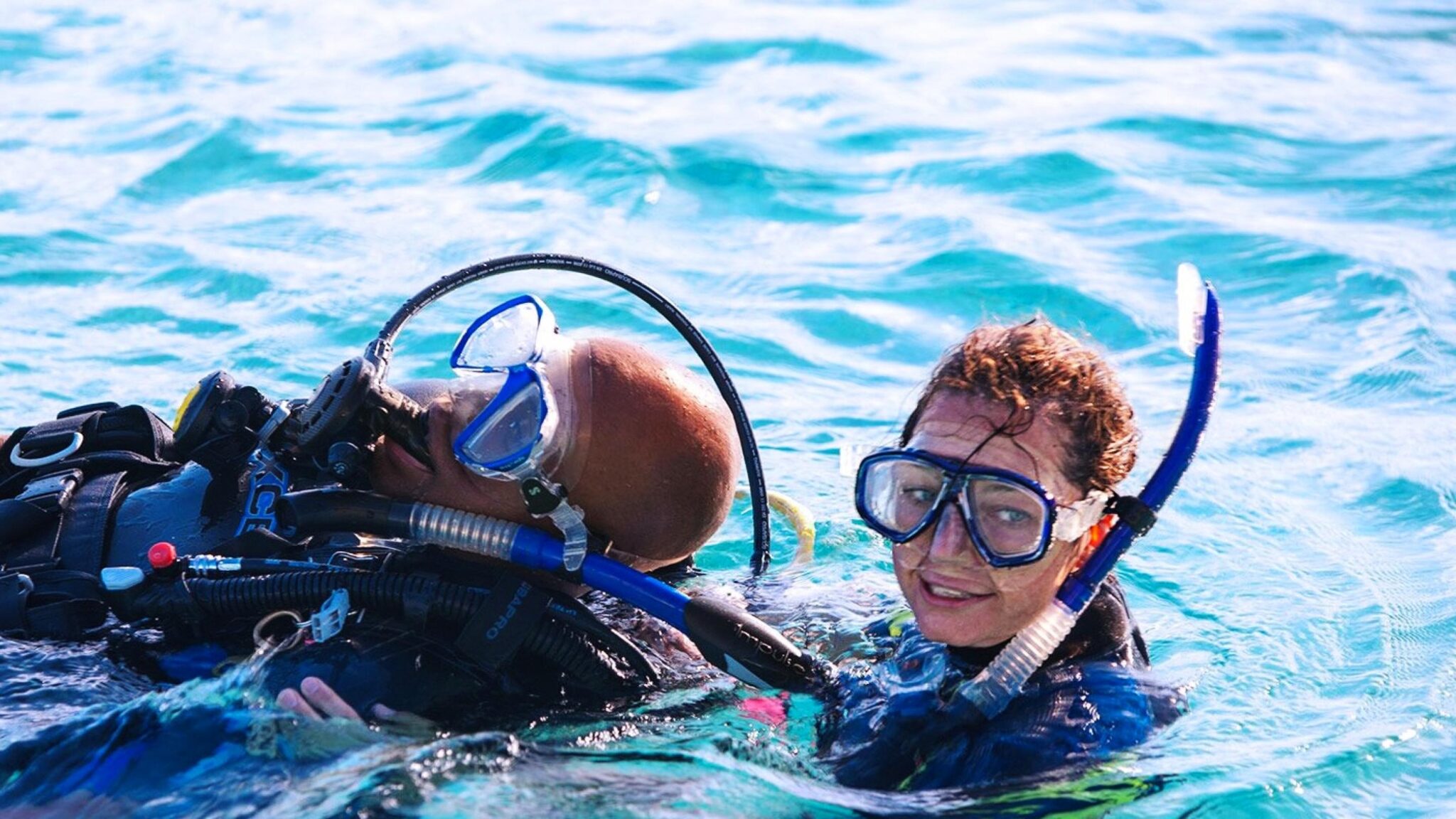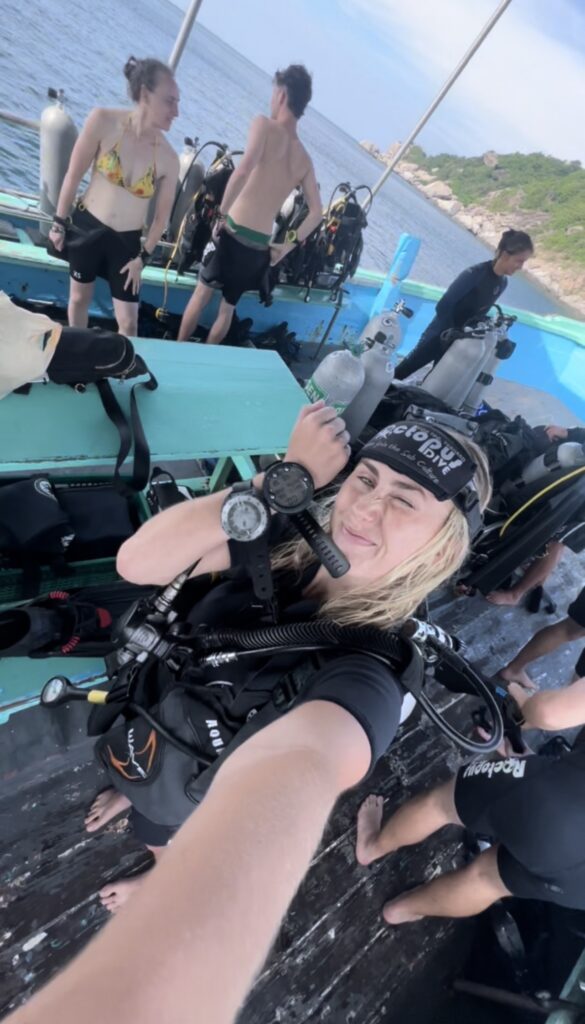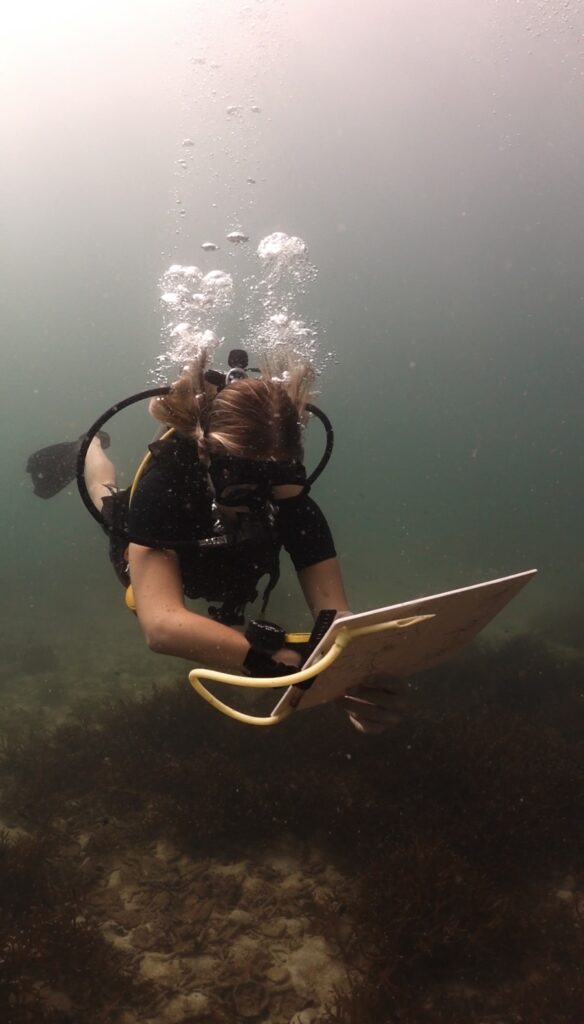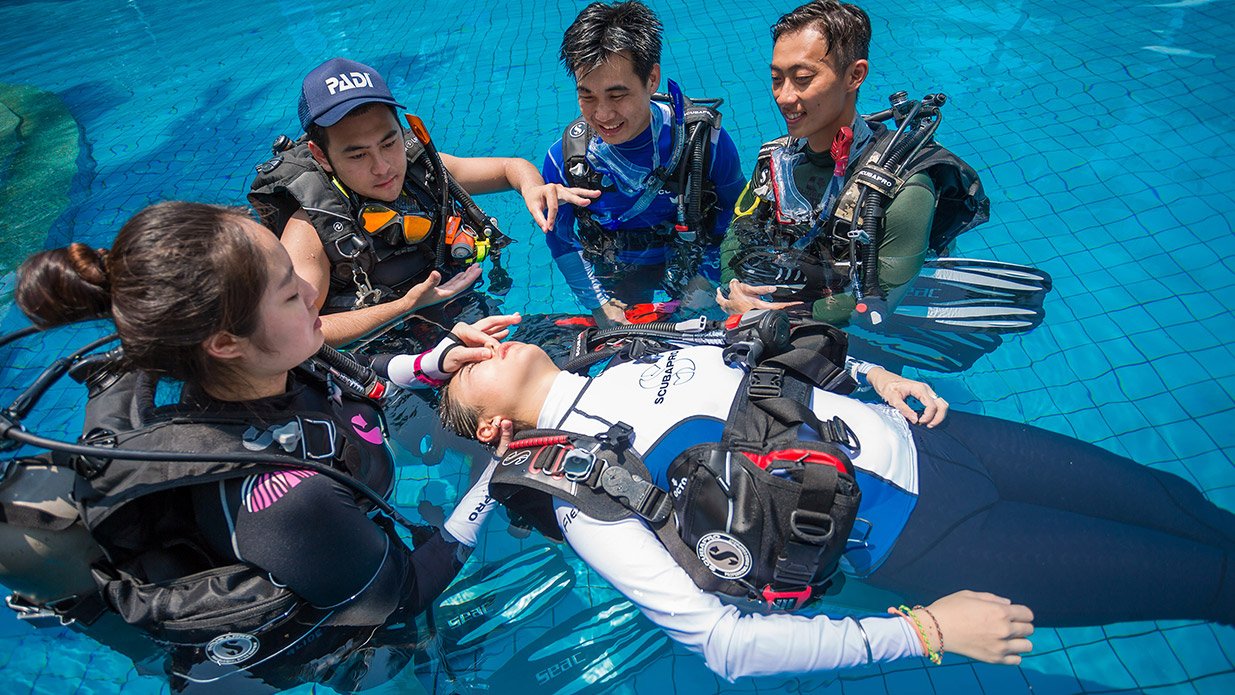Wow, I can’t believe I did that! That was so hard. I am so proud of myself. I remember thinking this (and telling my friends and family) after completing my PADI Rescue Diver course. I’d been anxious about this certification because it seemed so “pro” – and I was elated and exhausted to pass.
To this day, my Rescue Diver training was, and remains, the most challenging and rewarding scuba diving course I’ve taken. For these reasons, it’s also my favorite.
Earlier in the day, my nerves had me almost jittery. My PADI Instructor walked me through the final step: the two open-water rescue scenarios. Indeed, these felt like the “final exam” for my Rescue Diver certification, and I was genuinely nervous about whether I would be able to find the “missing diver” (my PADI Assistant Instructor) somewhere in the kelp forest at Casino Point on Catalina Island in California and successfully rescue him.
I am five-foot, three-inches (1.6m) on a good day. Being the smallest-statured diver in the course, my instructor knowingly paired me up with her Assistant Instructor – a 6” something (2m), 250 lb. (113kg) man. I remember thinking how unfair that was, and how much harder it would be for me. How would I be able to find him, bring him safely to the surface, perform practice rescue breaths on him, unresponsive, while towing him towards shore and exit him – all while executing a rescue plan? I had serious doubts about my ability to do so.

It was hard, and I was scared. But, I did it, all by myself. I couldn’t believe it! Sure, it was a drill, but it felt very real and I was very proud of myself.
Since then, I’ve used my rescue skills often – from towing a tired buddy in rough conditions to halting an uncontrolled ascent on a scientific expedition. Every time I use these skills, I feel so proud and so grateful for my Rescue Diver training.
In retrospect, I now appreciate my instructor’s pairing choice. Completing that Herculean task showed me that I could do it and that I could rescue anyone, irrespective of their size and my own. This moment made me a more confident waterwoman, a more aware dive buddy and a more competent diver. It changed me.
Read About Another Diver’s Rescue Experience
Many people say that the Rescue Diver Course is hard but that it will change how you dive – in a good way.
“Initial diver training focuses on personal diving skills and building confidence, and the Rescue Diver course is the first time that divers start to look beyond their own diving experience and become aware of the safety of others around them,” explains Ruth James, PADI Instructor Development Programs Specialist. ”This awareness can also heighten their own dive skills and make them more confident divers.”
The course makes you aware of others around you and makes you a safer diver overall. You learn to anticipate and fix minor issues before they become emergencies. Moreover, you gain the knowledge and skills necessary to rescue yourself and others in many emergencies. And, you practice doing so until it feels second nature.
Rescue Divers Master Mind and Matter
“We train and continue to do so because when the real thing happens, we don’t need to be thinking of what or how we’re going to do something, we just need to do,” says Ross Neil, PADI Course Director and Director of Training at Rainbow Reef Dive Center.
This is exactly what happened to Katie Leeper. While diving in Borneo, her dive guide’s tank suddenly blew open and all the air rushed out. Luckily, she’d recently completed Rescue Diver training.
 Katie Leeper poses with two dive watches. Courtesy Katie Leeper
Katie Leeper poses with two dive watches. Courtesy Katie Leeper Katie Leeper nagivates underwater. Rescue training hones these skills. Courtesy Katie Leeper
Katie Leeper nagivates underwater. Rescue training hones these skills. Courtesy Katie Leeper“The tank blew the reg off his tank and out of his mouth, and he came to me signaling ‘no air.’ I gave him my second reg. We decided the course of action, got his BCD off, dumped my air so we both didn’t float up and surfaced slowly from 65 feet (20m) down. We did a 5-minute safety stop and surfaced safely. Everyone was okay, but it was crazy.”
Leeper’s 360 camera caught the entire event on film. “It all happened in a split second,” Leeper says. “To watch it back in the video, I saw that it was all muscle memory for me. We train for these moments because we need it to be muscle memory when it matters, when we’re down there and we can’t think. If I didn’t train, I don’t think I would’ve been able to handle it.”
Leeper calls her Rescue Diver training a “game changer”, because it helped her learn ways to mitigate risk and react if something does happen. “It taught me not to freak out,” she adds. “There can’t be two freaked-out divers; there can be one, and you can rescue him.”
There are several prerequisites and requirements to begin your Rescue Diver course.
The minimum age to participate in the Rescue Diver course is 12. Rescue Divers certified between the ages of 12 and 14 earn a Junior Rescue Diver certification, which automatically becomes a Rescue Diver certification when the diver turns 15.
Candidates also must have completed the Underwater Navigation Adventure Dive and hold a PADI (Junior) Adventure Diver certification. Being a PADI Advanced Open Water Diver also meets this prerequisite.
PADI Open Water Divers can enroll in a Rescue Diver course to complete their knowledge development and confined-water rescue exercises, but cannot complete the open water exercises or earn their PADI Rescue Diver certification until they fulfill all the prerequisites
The Rescue Diver course is four to seven days in length.
The PADI eLearning for the Rescue Diver course can be completed at your leisure and in the comfort of your home or hotel room. This portion of the course should take eight to 12 hours. The in-water training sessions with your instructor should take an additional four to seven days. These include the self-rescue review, the 10 Rescue Diver exercises and the open water scenarios.
To earn your Rescue Diver certification, CPR and first aid training within the last 24 months is also required. These courses provide the knowledge, skills and confidence you need to help friends, family and even strangers in an emergency. To fulfill this requirement, your PADI Instructor can enroll you in an Emergency First Response® (EFR) Primary Care (CPR) and Secondary Care (First Aid) course.
 Emergency First Responder (EFR) training prepares you for emergencies.
Emergency First Responder (EFR) training prepares you for emergencies.
The EFR course is “low stress” and meant to build confidence, James reiterates, because “knowing what to do as a lay person responder is far better than not doing anything and waiting for medical personnel to arrive.” EFR courses follow the ethos of “Imperfect Care Provided is Better than Perfect Care Withheld.”
She adds, “Knowing how to provide care in a medical emergency can mean the difference between a fatal incident, or the patient being attended to until medical personnel are able to take over. Simply, this can be the difference between life and death.”
Everything You Need to Know about the Rescue Diver Course
Overall, the course will teach you to:
Improve your navigation skills Develop underwater safety techniques Troubleshoot and fix minor scuba gear issue Identify a diver in need at the surface or underwater Rescue another diver or yourself Use an emergency oxygen kit
In practice, there are four parts to the PADI Rescue Diver Course: eLearning, self-rescue skill review, Rescue Diver exercises and open water rescue scenarios. For part three, there are 10 PADI Rescue Diver exercises to learn and master. These take candidates through many of the scenarios they might encounter in real life, from a tired diver to a panicked one, an unresponsive diver to a missing one. Techniques covered include how to properly assess the situation, establish and maintain control, form an emergency assistance plan and safely execute the rescue.
The open water rescue scenarios put that knowledge and those skills to the test. The result is a whole different way of diving and approaching the water and those who enjoy it with you.
What to Expect: The 10 Rescue Diver Exercises
The Rescue Diver course is hard but worthwhile. It’s the first step towards becoming a leader underwater and progressing in your dive career. “A true Rescue Diver course is a doorway toward helping others as well as ourselves. It is something that is ever-growing but has to start somewhere,” says Neil.
The Rescue Diver course is also the last requirement before you can start your PADI Divemaster course and become a PADI Pro. It’s also the gateway to becoming a PADI Master Scuba Diver and/or a Public Safety Diver.
Leeper urges, “Especially as a woman, I say do it! 100%. In this male-dominated sport, [the] Rescue Diver [course] really empowers women. Rescue makes you a better diver and really proud of yourself. They paired me with a 6’7” (2m) man, and I thought, ‘How can I get him back to the boat?’ But I got through those difficult days and felt, ‘WOW, I am powerful. I am stronger than I believed.’”
For me, getting my Rescue Diver certification turned me into a dive leader and facilitator – skills that I now use constantly in my work on scientific expeditions and in the field. The confidence and competence this course provided have propelled me into a life I love bringing others into the blue, too.
Start Your Rescue Diver Course Here
Share This